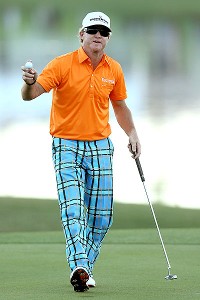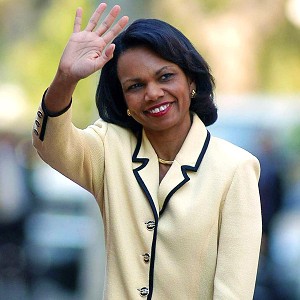Gay's 'Push Draw' Key Shot To Win At Humana
With
Tiger Woods and
Rory McIlroy missing the cut at Abu Dhabi, and making news mostly for everything but good play, the golf world focused its attention on the Humana Challenge in La Quinta, Calif on Sunday. In the California desert,
Brian Gay stopped the youthful surge on the PGA Tour with his fourth career win.
Father Time
Seeing Brian Gay on a PGA Tour driving range, you might wonder what's so special about him. He doesn't hit it long or particularly pure all the time. But once you study his career you learn that he's battled depression, injuries and swing changes to become one of the toughest competitors on tour.
[+] Enlarge
Stephen Dunn/Getty ImagesBrian Gay came roaring back to win the Humana Challenge.
To those who know the 41-year-old former Florida Gator, it wasn't surprising that he shot a 9-under 63 on Sunday to come from six back at the start of the day to win the Humana Challenge. After Russell Henley's rout at the Sony Open, it looked as if another 20-something might snag a victory for the second week in a row.
Scott Stallings was a good bet to win his third PGA Tour title after starting the day with a five-shot lead.
But Gay knows something about beating the odds. After bruising his ribs in a ski accident in December 2005, he battled depression for a while. Yet, he would pick himself up, and in 2009 he won twice. Last year, he struggled through another swing change. With former PGA Tour player turned swing instructor,
Grant Waite, he worked to gain some distance with his driver.
"I feel like it's coming around," Gay said. "It's helped me a lot, and I was just trying to get more efficient with my driver numbers to kind of max out my distance."
On Sunday, Gay got everything out of his game on the Palmer Private course at PGA West in La Quinta, Calif. As good as the future looks for young players like Henley and Stallings, there is still a bright future for the old guys.
For Gay, Father Time hasn't come calling yet.
Learning Curve For Scott Stallings
On Sunday, Scott Stallings lost a five-shot lead, but had the 72nd hole to salvage his third career win in as many years on tour. All he needed to do was find the green with a 6-iron on the par 5 18th and walk away with a two-putt birdie for his second trip to the Masters.
But he pulled his approach shot left into the water. Then, he couldn't get up and down for par to get into the playoff with Gay,
David Lingmerth and
Charles Howell III.
"Felt like I made a good swing, just [that the] ball came off a little right and got a bad kick and went in the water," said the 27-year-old former Tennessee Tech star. "But it is what it is. Coming down the stretch on the 72nd hole, you can't make mistakes like that. And it stinks, but it's something that I'll definitely learn from."
Stallings is a fast learner, and he will only get better from this setback. He's one of the brightest young players on tour. He can hit the ball a country mile and make putts under pressure as he demonstrated in his two wins, the Greenbrier Classic and the True South Classic. He still has several chances left to get into the Masters field by April.
The tour is full of good young American players: athletes with true grit and ice in their veins. By the end of the year, both Stallings and
Russell Henley, who won the Sony Open, could be in the top 30 on the money list and headed to the Presidents Cup in October.
Rory's New Adventure
On Thursday, after his 3-over 75 in the first round of the Abu Dhabi HSBC Golf Championship, Rory McIlroy made some glaring excuses in his post-round interview.
First, he proclaimed that he was in an "experimental period" with his new golf clubs, and that he would take four weeks off after the tournament to work out some of the kinks.
Abu Dhabi was phase one of the trials.
In other words, he wasn't prepared to win the event. And when he is ready on a bigger stage, say, at his next tournament, the Accenture Match Play n February, he hopes to have a product ready for market. But until such a time comes when he feels like the old Rory, his tournament appearances are for "experimental" use only.
Here is the difference between him and Tiger Woods. Through his numerous swing changes and injuries, Tiger has never put warning labels on his game. Tiger has attributed some of his inconsistency to pain or some swing flaw, but he's always played to win. Watching him grind his way through every shot, you never feel like he's shuffling around in a glorified demo day, experimenting with new clubs.
Second, McIlroy said he was rusty. That's a reasonable gripe. He hasn't played a competitive round in eight weeks. But much of the field is dusting off some rust as this point in the season. When the starter calls your name, you have to be ready to play.
Then before Friday's second round, he dumped his new Nike putter for his old Titleist Scotty Cameron. To explain the decision and his failure to make any putts and another 75 to miss the cut by four shots, McIlroy gave a geeky explanation about the putter's weight.
"I just felt like the greens that I've been practicing on in Florida are a lot faster than these," he said. "The putter, the Nike putter is great on that. But then getting to here, it's just a lighter so it's just a weight issue more than anything else.
"I can feel the head of this one I used today a little bit better. On fast greens, the other one works fine."
One poor round on the greens is all it took for him to go back to his battle-tested putter. That's not enough time to know if anything works, especially after eight weeks off. Plus, the weight is the easiest thing to change.
Four weeks off won't be enough for McIlroy to solve any issues he has with the new equipment. Through competition, he's got to find confidence with his new wares.
I don't completely agree with some that he shouldn't have changed equipment. That's his prerogative. But with the shift, he has certainly brought on himself an unnecessary distraction.
McIlroy shouldn't get too ahead of himself, believing that every tournament leading up to the Masters is simply some trial period in preparation for that glorious week in April.
A player's year still unfolds shot by shot, tournament by tournament.
McIlroy can't lose that free-swinging, excited working-class kid from Holywood, Northern Ireland to superstardom and fancy new branding. The proof of his success this year will not be in how well he adjusts to the new clubs, but how determined he is to put all of that new stuff out of his mind and just play golf.
Tiger's Real Mistake
Failure to comply with the Embedded Ball Rule cost Tiger Woods two shots and a place in the weekend at the Abu Dhabi HSBC Golf Champions. But it never should have come to that. Tiger didn't play well. In his two rounds at Abu Dhabi, he hit only 39 percent of his fairways.
"I didn't hit it particularly well," he said. "I putted great, but just didn't hit it very good."
In recent years, Tiger has focused on his full golf swing under the tutelage of Sean Foley. The more he talked about his swing change, the more crucial short putts he seemed to miss.
At Abu Dhabi, he talked about working back from the green.
"When you're 11 months old, you're not going to be bombing drivers out there," Tiger said. "So that's how I learned the game, and every offseason I do the same thing."
If Tiger is to win his first major championship since the 2008 U.S. Open at Torrey Pines, he will need to find that wizardry with the short game that helped him to 14 majors. He'll be back at the site of that heroic win this week for the Farmers Insurance Classic. He's looking for his ninth career win at Torrey Pines.
His fabulous memories at the San Diego course will help him quickly forget the missed cut and embedded ball at Abu Dhabi.
Player's Captain
During the European Tour event in Abu Dhabi,
Paul McGinley was named the European Ryder Cup team captain at Gleneagles in 2014. McGinley had a very vocal lobbyist in Rory McIlroy.
"I have a very strong opinion about this," McIlroy said. "I really think Paul deserves it.
"He has been a great player and a great personality for the European Tour over the years. I also played under him at the Seve Trophy in 2009, and I thought he did a great job. From all the captains I've played under, I think he was the best."
This prompted
Jason Dufner to say that the players should have more say in the selection of the American captain. Dufner, who was 3-1 in his first Ryder Cup at Medinah, said that the European players are "going to come together" because of the role players had in choosing McGinley.
Over the years, PGA of America has asked from input from players, but the organization of club professionals makes the final decision on the U.S. captain.
The PGA's control was fully evident in its selection of
Tom Watson to the U.S. captaincy for the 2014 matches. Fed up with the recent European domination of the matches, PGA of America president Ted Bishop personally reached out to the eight-time major champion and prepared a long dossier as to why Watson was the right man for the job. If the tour players had a chance to voice any opinions on the decision, it was merely a courtesy, because the PGA was set on its candidate.
There are problems with both approaches.
An activist group of players could turn the selection process into a situation in which players mount their own campaigns to pick their favorites, with influential stars like McIlroy using their clout to sway other players.
What are the chances all the players are going to agree on the same captain? Division within the player corps over the captain could lead to dissension on the team.
The PGA's centralized process can be a little dictatorial and top-heavy, but with some player input it's the closest thing possible to a democratic process.
The European team was going to come together around any of its candidates. That's because the matches are not about the captains, but the men who line up to play for three days every other year.
 1. Cook (-17)*
1. Cook (-17)*

 ESPN.com senior golf writer Farrell Evans has taken to Twitter. See what he has to say about all things golf.
ESPN.com senior golf writer Farrell Evans has taken to Twitter. See what he has to say about all things golf.